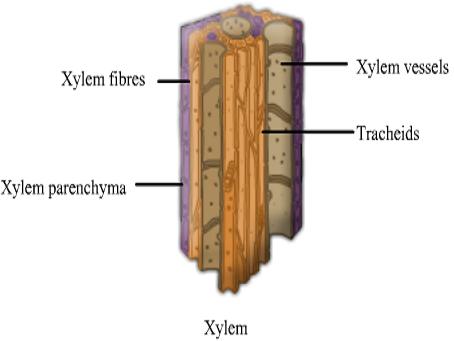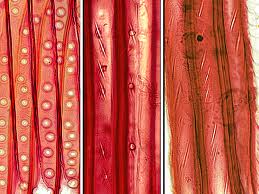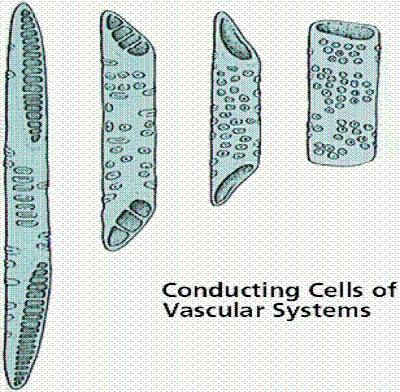Difference Between Tracheids and Vessels

Nearly every living organism directly or indirectly depends on plants for survival, as the latter are the only organisms capable of manufacturing their own food using water and minerals extracted from the earth. Getting the minerals and water to the food-manufacturing site, typically the leaves, and then transporting the manufactured food to the storage sites, typically the stem and roots, is performed by xylem and phloem, which are the vascular tissues of the plant.
Xylem, the main, water-transporting tissue of vascular plants, is made of tracheary elements, tracheids and wood vessels, more commonly known as simply vessels.
Both tracheids and vessels are the chief water-conducting elements of a plant. It is due to this similar function that some people struggle to tell the difference between the two.
There are, however, a number of key differences between tracheids and vessels.
Both tracheids and vessels are said to be involved in the transportation of water in plants, generally. The former, however, is mainly the conducting element of pteridophytes and gymnosperms, whereas the latter is mainly a conducting element of an angiosperm.
Another thing that sets tracheids apart from vessels is the type of cells they both originate from. The former originate from single cells, whereas the latter originate from a longitudinal file of cells.
Tracheids and vessels differ from each other on account of diameter as well. The water-conducting elements found in pteridophytes and gymnosperms have a narrower diameter as compared to the water-conducting elements typically found in the angiosperms.
The number of pits and their size serve as another distinguishing factor between tracheids and vessels. The former have larger pits, whereas the latter have smaller pits. However, it must be noted that the number of pits in tracheids is lesser as compared to the number of pits in vessels.
Tracheids also differ from vessels on account of the perforated and imperforated cells. While the former has imperforated cells, the latter has perforated cells. How the perforation and imperforation of cells helps them to perform their function is another discussion.
Due to the perforation of cells in vessels, their efficiency in respect to water conduction is significantly higher than that of tracheids.
The walls of tracheids are thicker with narrow lumen as compared to that of vessels, which are less thick, and with larger lumen.
The average length of tracheids is up to 1 metre, whereas the average length of vessels is up to 10 centimetres.
Instructions
-
1
Tracheids
Tracheids are water-conducting elements and are typically found in pteridophytes and gymnosperms. They are elongated cells that are closed at both ends. Their lignified wall is relatively thin and is opened by a number of pores.
Image courtesy: uri.edu

-
2
Vessels
Wood vessels, more commonly known as vessels, are water-conducting elements, which are found in the angiosperms. They can be thought of as the water-filled tubes of xylem. The perforated walls of vessels enable them to perform their function with more efficiency.
Image courtesy: emc.maricopa.edu







